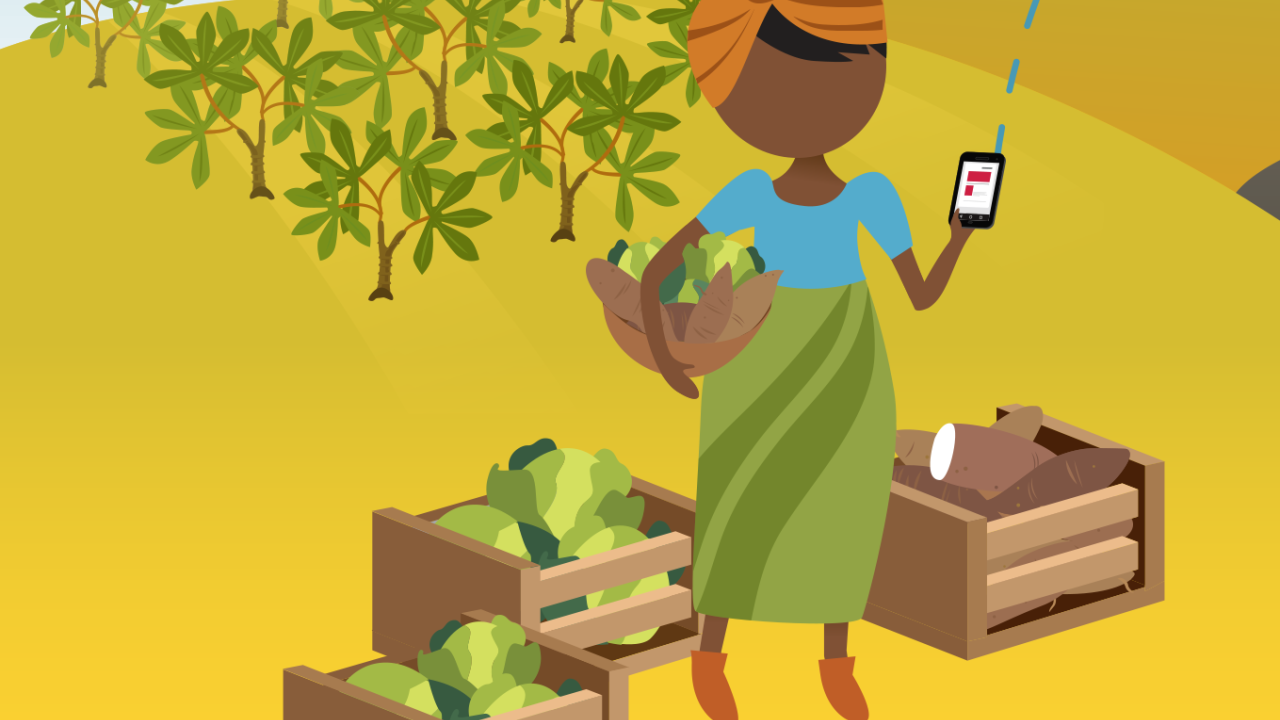
USAID Releases New Guide to Using Digital Tools for Agricultural Insurance
Mobile phone technology has transformed how people manage money in developing economies, and it did so in less than a decade. With adoption of mobile-based insurance blooming, the technology also appears poised to transform how poor and vulnerable agricultural households manage risk.
In January, 2018, USAID launched a guide for using digital tools like mobile phones to increase access to agricultural insurance as part of a broader effort to promote resilience in rural communities. According to the mobile industry organization GSMA, the number of mobile-based insurance policies worldwide in 2015 reached had already 31 million, but only seven percent of those were for agricultural insurance.
“This guide will highlight how digital tools can help make agricultural insurance more accessible,” said Gary Linden, acting senior deputy assistant to the administrator in the USAID Bureau for Food Security, at the guide’s launch event in Washington, D.C.
Increasing the resilience of agricultural households in developing economies is quickly moving to the forefront of global development efforts. In the most basic sense, resilience describes how well a household can withstand a shock that could hurt them in the long-run. The shock is often weather-related, like drought or flood, and can wipe out a family’s food stores or income with lasting consequences.
“This new guide is a valuable toolkit for helping to improve access to insurance but also for improving the quality of insurance products available to vulnerable agricultural communities,” said Tara Chiu, assistant director of the AMA Innovation Lab.
Research has shown that insurance can be a valuable tool for helping a household to increase their resilience to shocks. Research has shown that the predictability of payouts helps to manage risk but also has the benefit of encouraging households to investment in more productive inputs that lead to higher incomes. A new study found that it could even increase the reach of government spending on social protection.
The new USAID guide, “Using Digital Tools to Expand Access to Agricultural Insurance,” was written under the Mobile Solutions Technical Assistance and Research (mSTAR) project. It is a diagnostic tool to help determine where and how digital tools can help address the challenges of expanding access to agricultural insurance.
These challenges include lack of awareness and understanding about insurance among households, high costs of providing insurance and a limited availability of products that meet the needs of poor and low-income farmers. Improving the quality of products available is at least as important as increasing access to them.
“Insurance is great, but it needs to be safe,” said Jennifer Cissé, senior risk advisor for the USAID Bureau for Food Security, at the Washington, D.C. launch event.
This USAID guide is one of many efforts underway to increase access to quality insurance products that help rural households to manage risk. The AMA Innovation Lab has also been developing criteria to determine whether an index insurance product meets a minimum quality standard, and has been encouraging broad adoption of product certification.
In addition to increasing access to insurance, Chiu said that digital tools have a big role to pay in improving the quality of the products available. This is critical, considering that right now the quality of index insurance products in developing economies remains unregulated. There are no certifications for a minimum quality standard, which puts vulnerable households at an unnecessary risk.
“This is especially important for the most vulnerable and marginalized populations that tend to be the most remote,” said Chiu.
Alex Russell manages communications for the AMA Innovation Lab.
